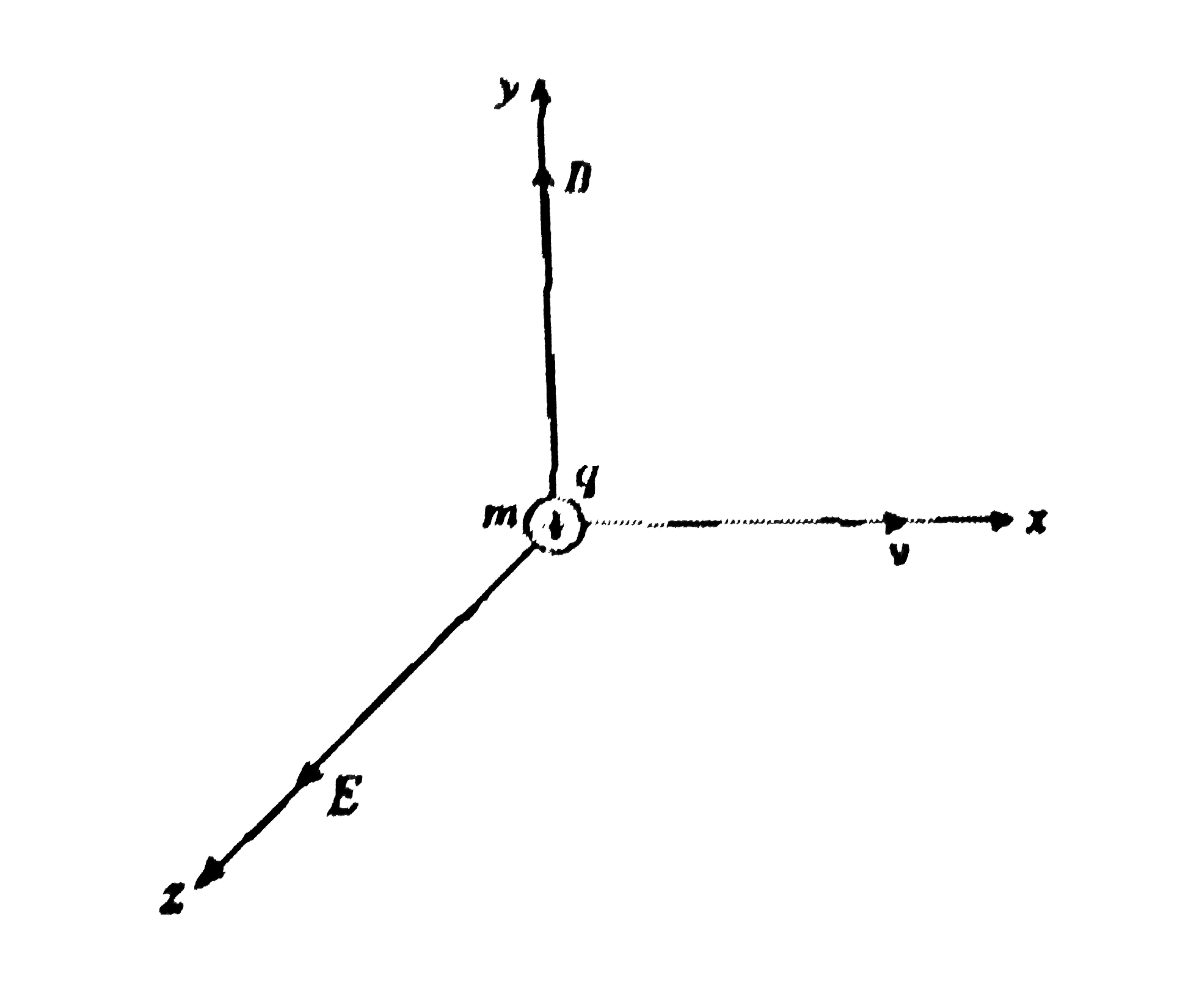A charged particle moving with a uniform velocityenters a region where uniform electric and magnetic fields are present. It passes through the region without any change in its velocity. What can we conclude about the relative direction of , and Solution in Punjabi
Step by step video & image solution for A charged particle moving with a uniform velocity vecv enters a region where uniform electric and magnetic fields vecE and vecB are present. It passes through the region without any change in its velocity. What can we conclude about the relative direction of vecE, vecv and vecB? by Physics experts to help you in doubts & scoring excellent marks in Class 12 exams.
Updated on:21/07/2023Topper's Solved these Questions
- FORCE ON A CHARGEBOOK - MODERN PUBLICATIONCHAPTER - FORCE ON A CHARGEEXERCISE - EXERCISE
59 Videos
- ELECTROMAGNETIC WAVESBOOK - MODERN PUBLICATIONCHAPTER - ELECTROMAGNETIC WAVESEXERCISE - EXERCISE
66 Videos
- FORCE ON A CURRENTBOOK - MODERN PUBLICATIONCHAPTER - FORCE ON A CURRENTEXERCISE - EXERCISE
105 Videos
Similar Questions
Show that the path followed by a charged particle inside the electric field is parabolic in nature.
View SolutionWhy did Maxwell introduce the concept of displacement current ?Explain.
View SolutionWhen is the force experienced by a current carrying conductor placed in a magnetic field, the largest?
View SolutionA charged particle moving with a uniform velocity →v enters a region where uniform electric and magnetic fields →E and →B are present. It passes through the region without any change in its velocity. What can we conclude about the (i) relative direction of →E, →V and →B? (ii) magnetic of →E and →B?
or
Find the condition under which the charged particle moving with different speeds in the presence of electric and magnetic field vectors can be used to select charged particles of a particular speeds.
View SolutionA charge particle of charge q, mass m is projected with a velocity →v=vˆi in a region of space where electric field strength →E=Eˆk and magnetic induction →B=Bˆj are present. The acceleration of the particle is:

View SolutionA charged particle goes undeflected in a region containing uniform electric and magnetic field.It is not possible at all (vecupsilon="velocity of particle", vecE="uniform electric field", vecB="uniform magnetic field")
View SolutionIn a region, electric field →E and magnetic field →B are mutually perpendicular. If a partical of charge q enters that region with velocity →v normal to both the fields, under what condition does the direction of motion of the particle remain unchanged ?
View SolutionIn a certain region of space, electric field vecE and magnetic field vecB are perpendicular to each other. An electron enters in the region perpendicular to the direction of both vecB & vecE and moves undeflected. Find the velocity of electron.
View SolutionA proton with velocity vecv enters a region of uniform magnetic induction vecB , with vecv perpendicular to vecB and describes a circle of radius R. If an alpha - particle enters this region with the same velocity vecv , it describes a circle of radius
View SolutionA charged particle moves with velocity →v in a uniform magnetic field →B. The magnetic force experienced by the particle is
View SolutionA charged particle with charge q enters a region of constant, uniform and mutually orthogonal fields vecE and vecB with a velocity vecv perpendicular to both vecE and vecB , and comes out without any change in magnitude or direction of vecv . Then
View SolutionWhat is the direction of the force acting on a charged. Particle q moving with a velocity →v in a uniform magnetic field →B ?
View SolutionIn a certain region of space electric field →E and magnetic field →B are perpendicular to each other and an electron enters in region perpendicular to the direction of →B and →E both and move underflected, then velocity of electron is
View SolutionA charged particle goes undeflected in a region containing electric and magnetic fields. It is possible that
i) →E∣∣∣∣→B,→V∣∣∣∣→E
ii) →E is perpendicular to →B and both are perpendicular to →V
iii) →V∣∣→B but →E is not parallel to →B
iv) →E∣∣→B but →V is not parallel to →E
View SolutionUniform magnetic field vecB Velocity in vecV What is the direction of the force acting on a charged particle q moving from?
View Solution
